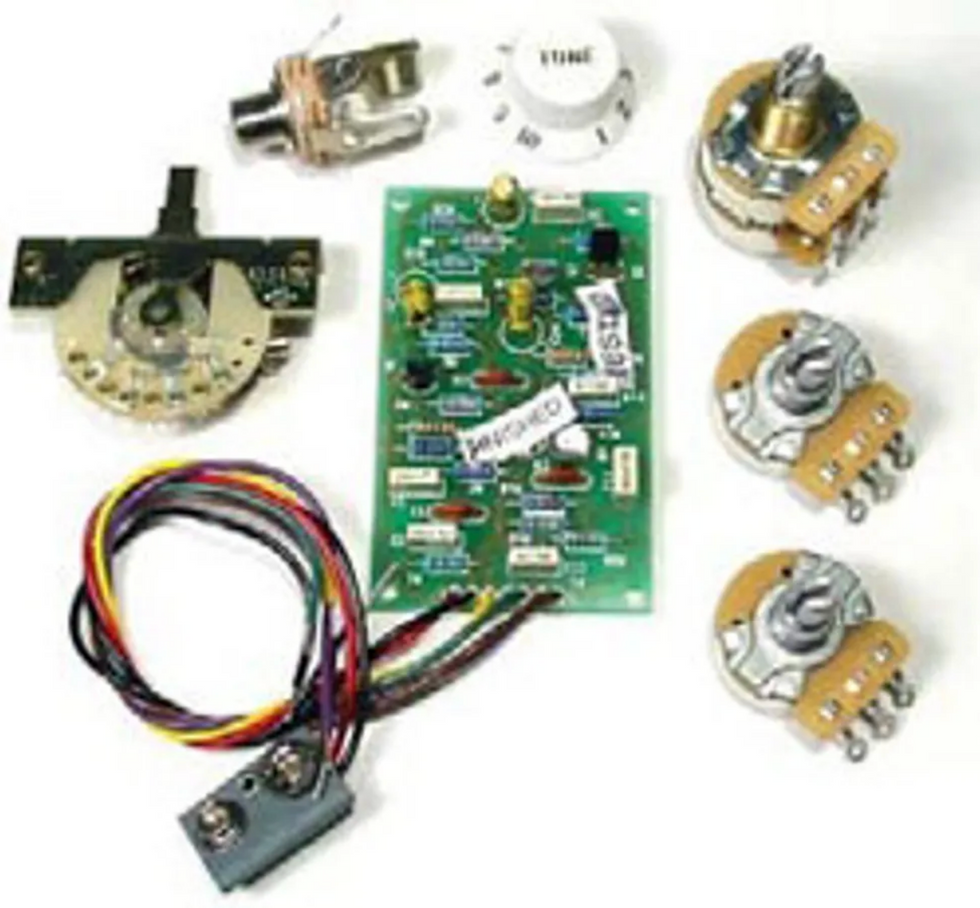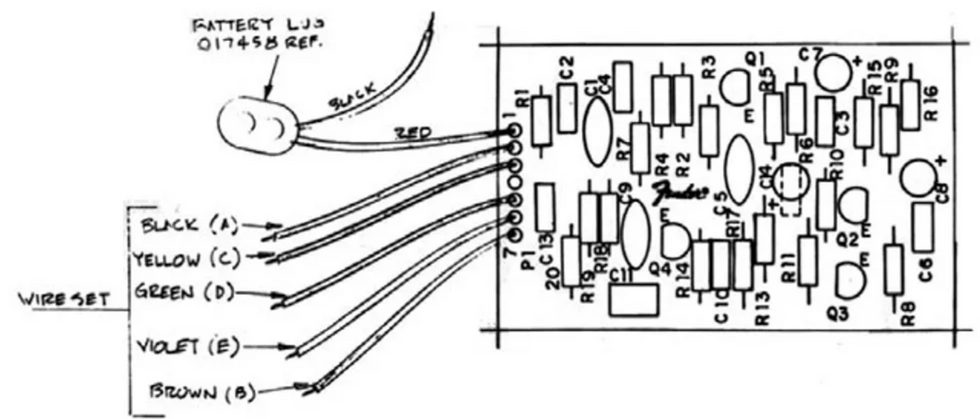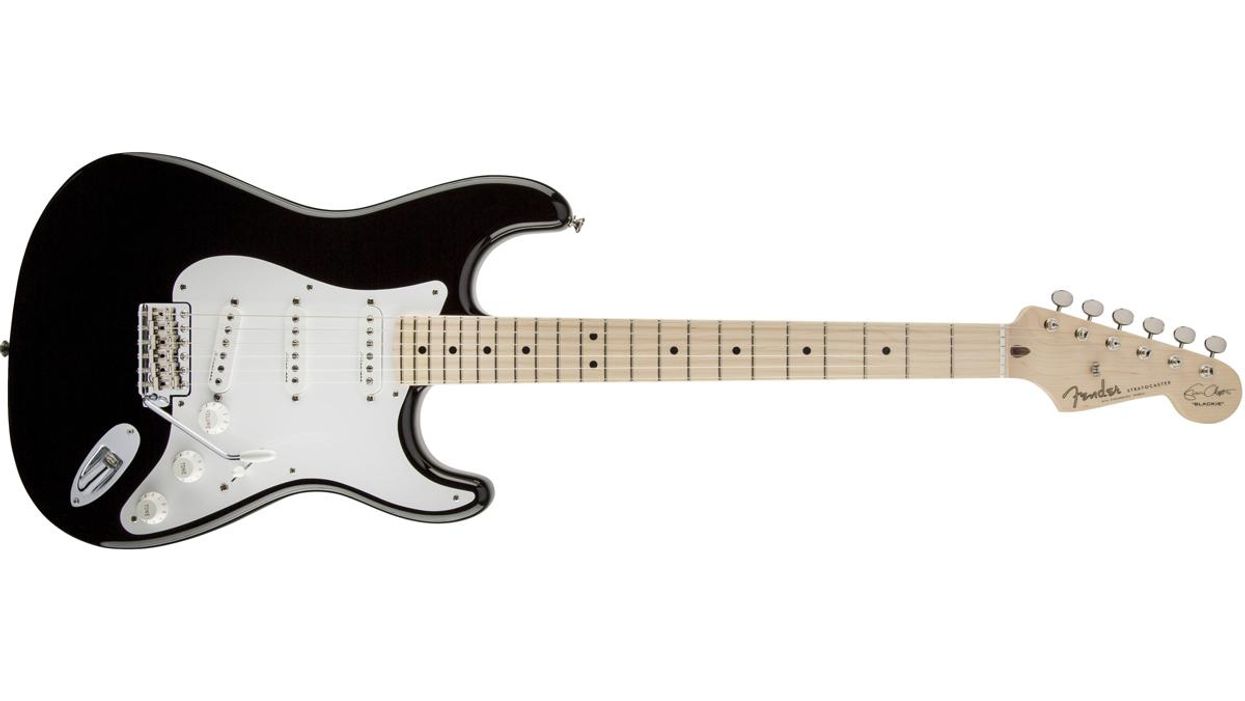In our previous two installments, we explored the Fender TBX tone control and ways to modify it. This month, let's take a closer look at the Fender active mid-boost, aka the "Eric Clapton mid-boost" circuit.
Originally called the "MDX mid-boost circuit," this device is a 12 dB active boost circuit that first showed up in the 1983 Fender Elite Stratocaster. The MDX circuit was developed by James Demeter and John Carruthers to make single-coil pickups sound like humbuckers—a typical '80s thing. The Elite Strat concept only survived for two years before it was discontinued because of massive problems with Fender's Freeflyte Tremolo System.
For me, the Elite Strat is the archetypal '80s Strat, and I always smile when I get one on the workbench. The Fender Elite Strat served as a template for the Eric Clapton Stratocaster, a model that made its debut in 1988. Clapton liked the MDX boost circuit (which he called a "compressor") and told Fender to keep it for his signature Strat. He also asked for more "compression," which prompted Fender to replace the Elite Strat's standard pickups with Lace Sensor Gold pickups and an updated MDX circuit that had been tweaked to deliver a midrange boost of up to 25 dB at around 500 Hz.

Fender's Stratocaster Mid Boost Kit
The EC Strat's features have changed several times over the years, but the updated MDX mid-boost remains unchanged, and you can buy it for about $80 through a Fender dealer to install in your own Strat. Fender officially changed the name to "Stratocaster Mid Boost Kit" (part #005757000). The set comes with a prewired mid-boost PCB, a TBX tone control, two pots, a stereo output jack, and all the small parts you need to connect it to your guitar.
Here's how Fender describes it:
The Stratocaster Mid Boost Kit includes all the parts needed to upgrade your guitar with the Mid Boost Preamp used on the Eric Clapton and Buddy Guy Strats. The system replaces one of the original tone controls with a variable "Midrange Boost" control. The Mid Boost knob adjusts gain from 0 dB (no boost) to 25 dB (for killer mids). Great for clean and distortion tones. The TBX tone control is neutral in the middle position, cuts treble in one direction and cuts bass in the other direction.
Retrofitting Tips
If you want to install a mid-boost system in your guitar, keep in mind that not only do you have to install the PCB somewhere, you also need space for a 9-volt battery to power the preamp. There are many ways to place these two components inside a Strat, and naturally the ideal location depends on a particular instrument and its routings.
The easiest way is to place the PCB on the bottom of the Strat's electronics compartment (below the pots) and the battery in the trem-spring cavity. While this is the quick-and-dirty way, a more elegant solution is to route an additional compartment for the PCB below the neck and middle pickups. This area is completely covered by the pickguard, so you won't see it. There are many variations out there, though, so do a Google search to find the one you like best.

The component list and layout for Fender's mid-boost preamp circuit.
The DIY Approach
A lot of players want to install an active boost device in their guitars but complain about the high price of the Fender kit. If you're willing to roll up your sleeves, check out this very cool DIY project that I got from Australian guitarist Ritchie Laird (reverbnation.com/ritchielaird). He developed a mod for an active, EC-style mid booster that's even more flexible than the Fender kit. Best of all, it won't break the bank.
For this project, Laird uses an inexpensive, onboard acoustic-guitar preamp called the Belcat EQ-505R (belcat.com). You can often find the Belcat preamp on eBay for less than $10. And you can download Laird's super-detailed, step-by-step instructions from my site (singlecoil.com/docs/active_strat.pdf). I've had feedback from players all over the world who've tried this project, and they all loved it.
Next month, we'll talk about how you can make your own version of the Fender Delta Tone. So stay tuned for more Strat mods—and in the meantime, keep on modding!
[Updated 10/12/21]






































